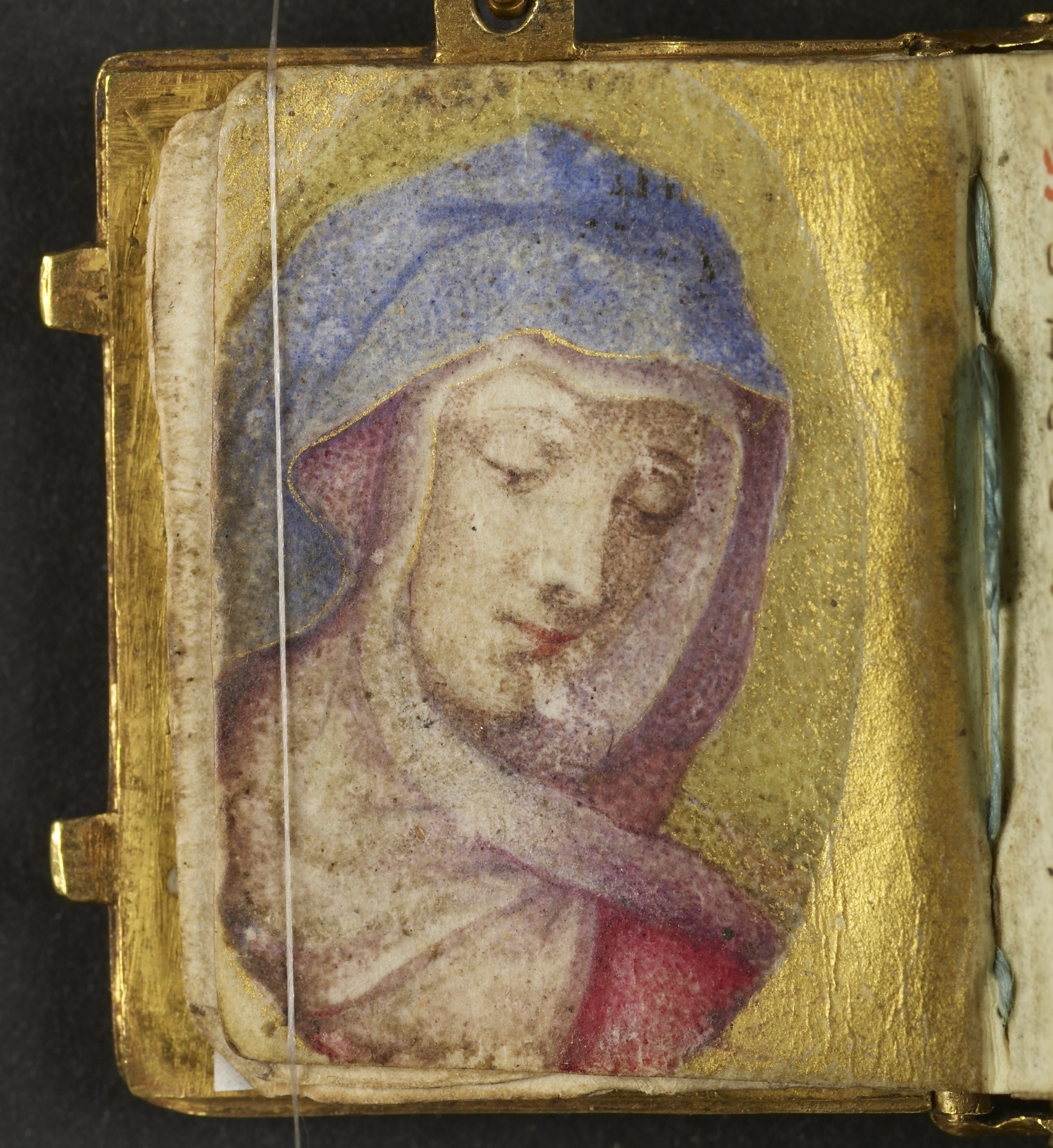Leaf from Miniature Manuscript Used as a Pendant: Portrait of the Virgin
ca. 1550 (High Renaissance)
Provenance
Provenance (from the French provenir, 'to come from/forth') is the chronology of the ownership, custody, or location of a historical object. Learn more about provenance at the Walters.
Provenance (from the French provenir, 'to come from/forth') is the chronology of the ownership, custody, or location of a historical object. Learn more about provenance at the Walters.
Henry Walters, Baltimore, after 1895 [mode of acquisition unknown]; Walters Art Museum, 1931, by bequest.
Conservation
| Date | Description | Narrative |
|---|---|---|
| 6/2/2014 | Examination | Examined for digitization |
| 6/2/2014 | Examination | The binding is made of gold sheet with engraved patterns and recesses. The enameling technique is champlevé. White opaque enamel fills the background recessed areas surrounding the curvilinear decoration. The white enamel has some losses and cracks that are from mechanical damage. The dark blue enamel forming dashed borders around the perimeter and central ruby is unstable. The original enamel recipe has caused the blue enamel to break down or crizzle. The text block is secured by a single gold pin of the same size as the hinge pins on the binding. The gemstones are rubies or spinels and fluoresce under long and short wave ultraviolet light. |
Geographies
Italy, Rome (Place of Origin)
Measurements
Folio: 13/16 x 11/16 in. (2 x 1.8 cm)
Credit Line
Acquired by Henry Walters, after 1895
Location in Museum
Not on view
Accession Number
In libraries, galleries, museums, and archives, an accession number is a unique identifier assigned to each object in the collection.
In libraries, galleries, museums, and archives, an accession number is a unique identifier assigned to each object in the collection.
W.444.1V




